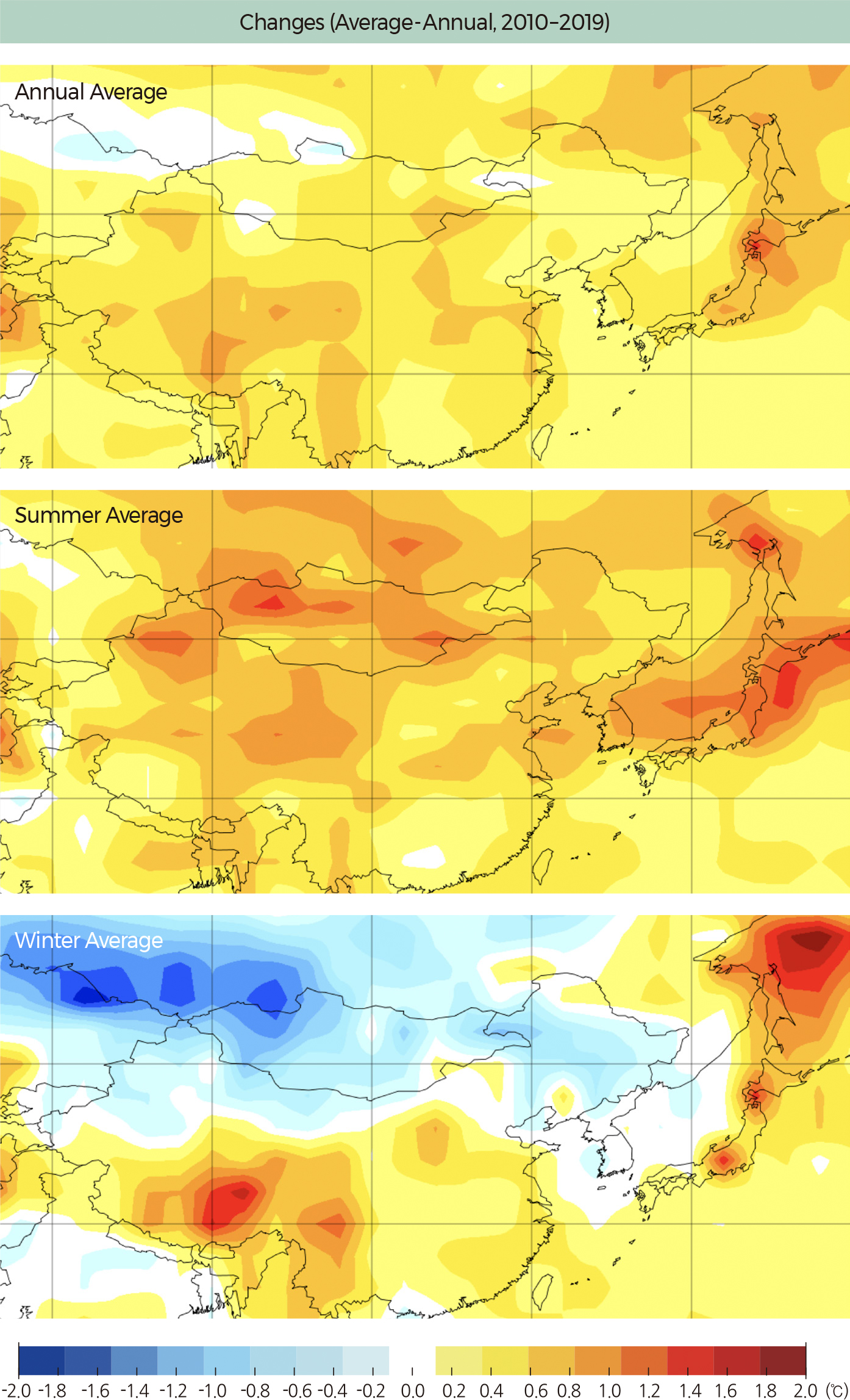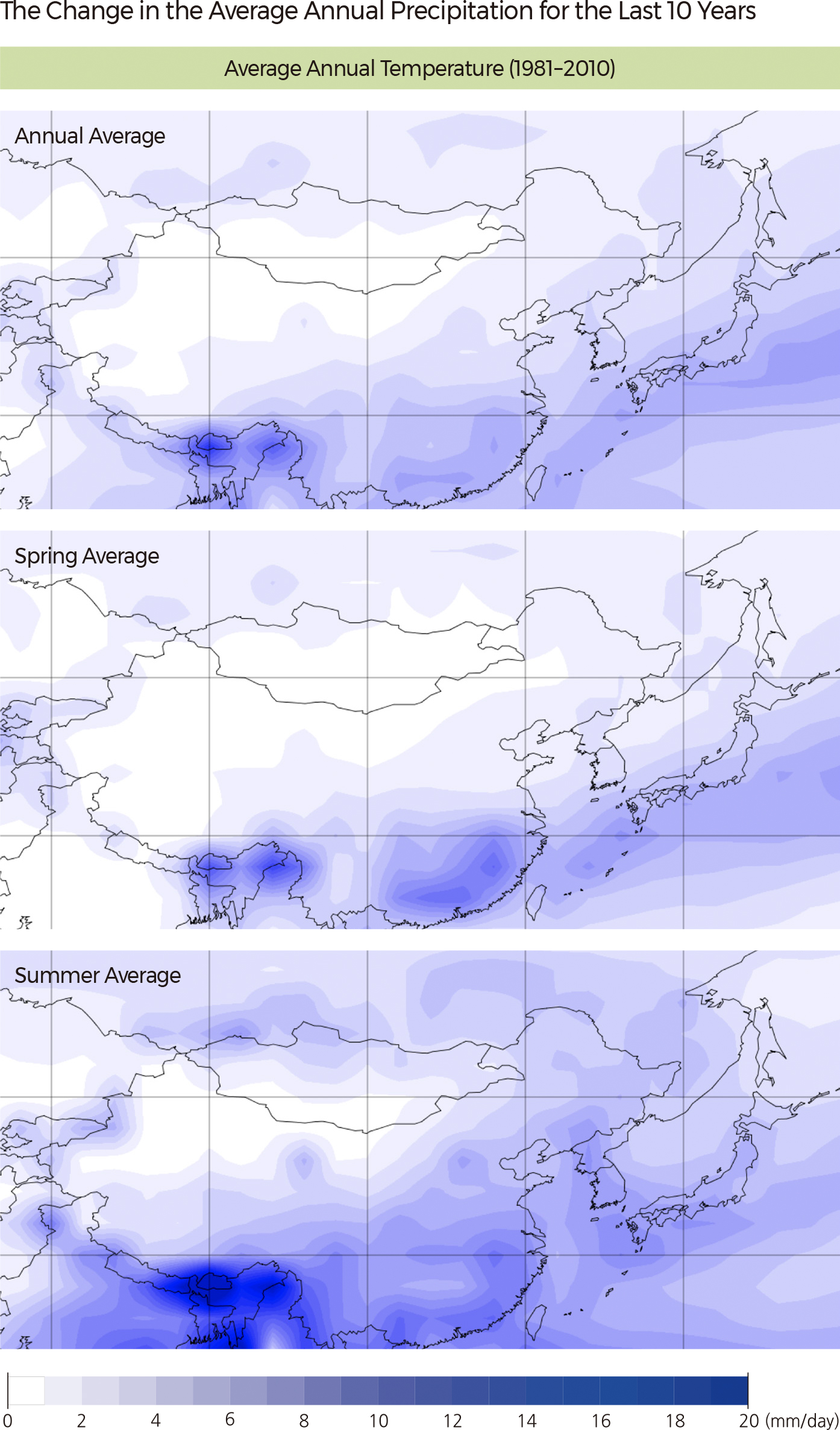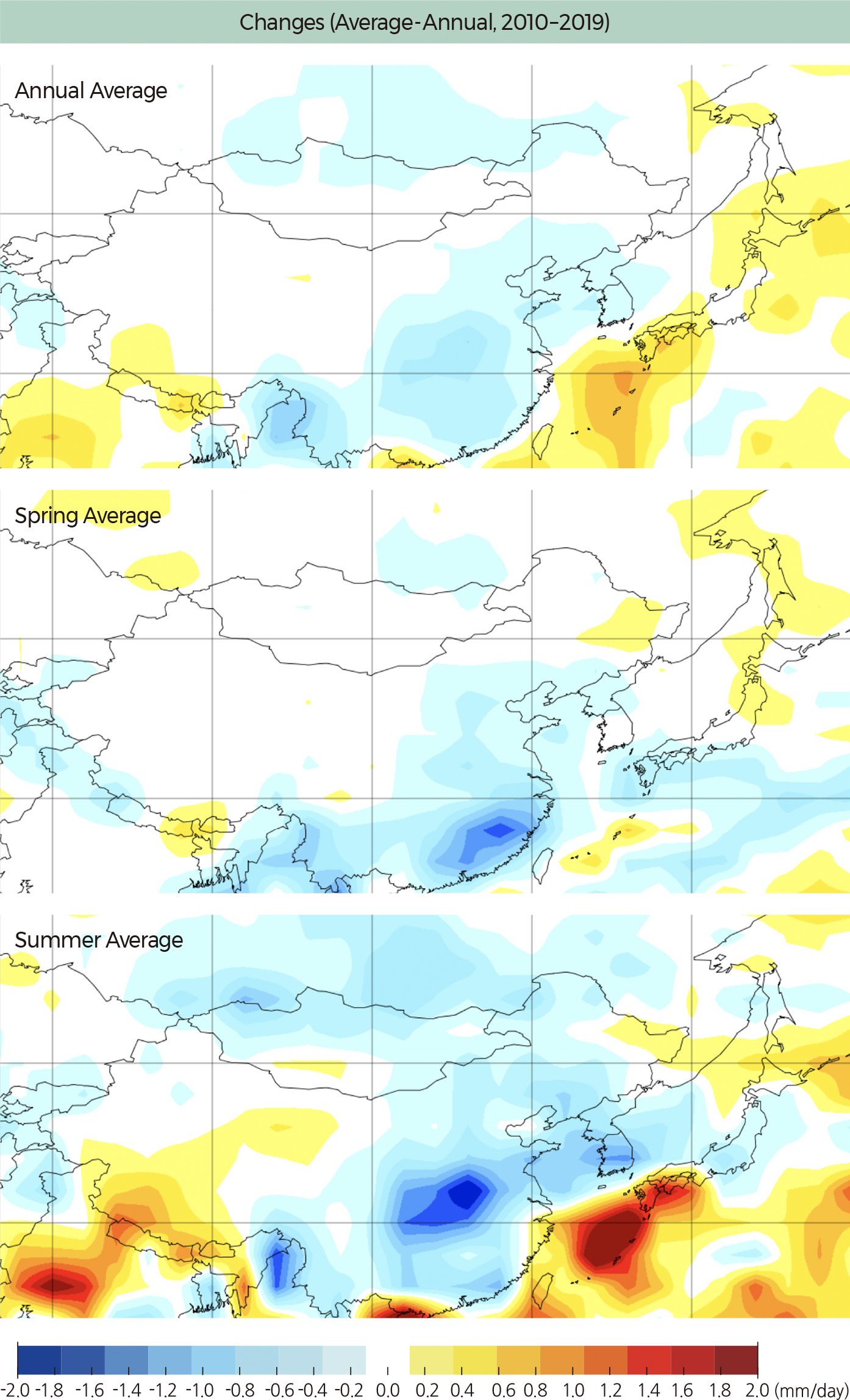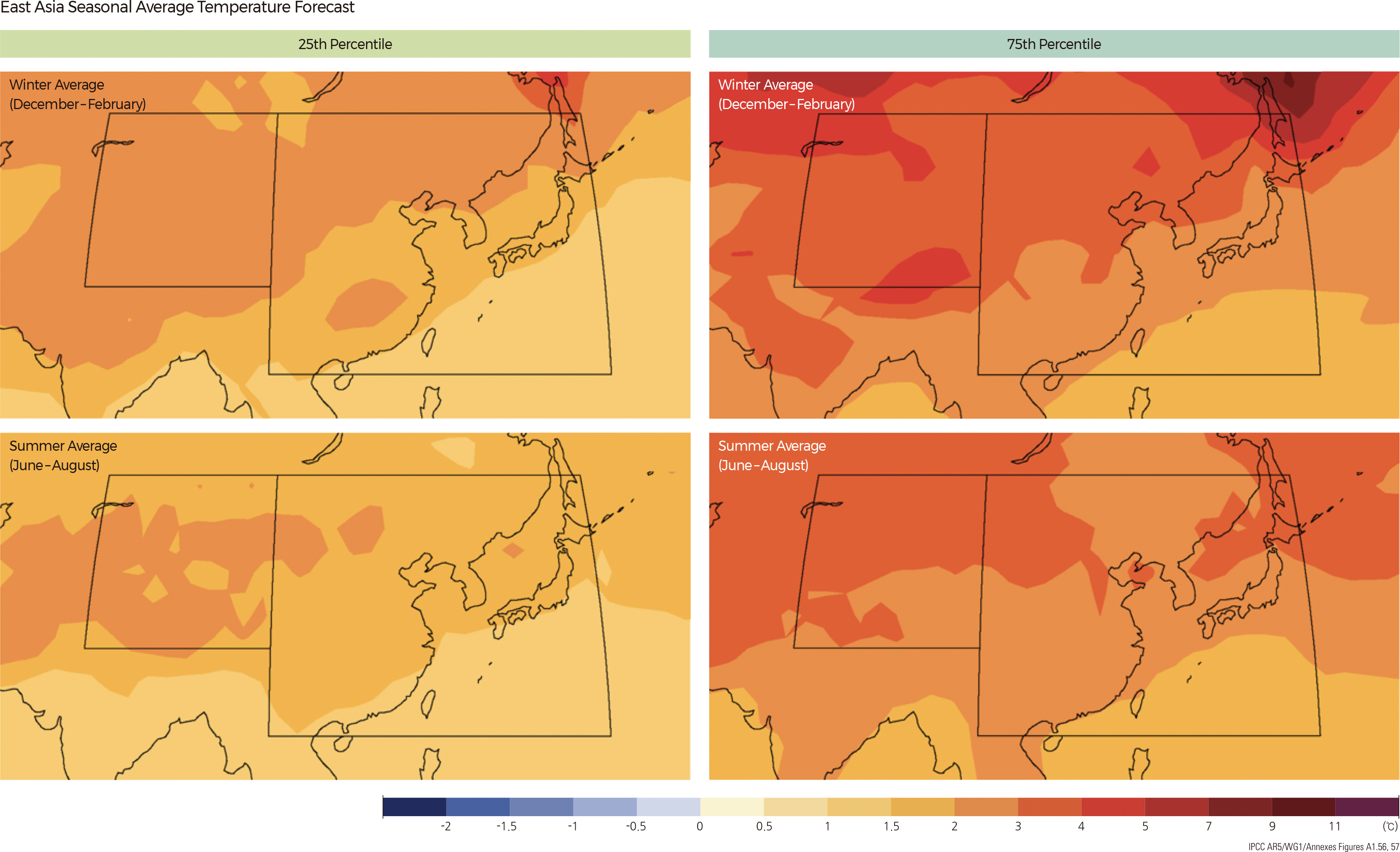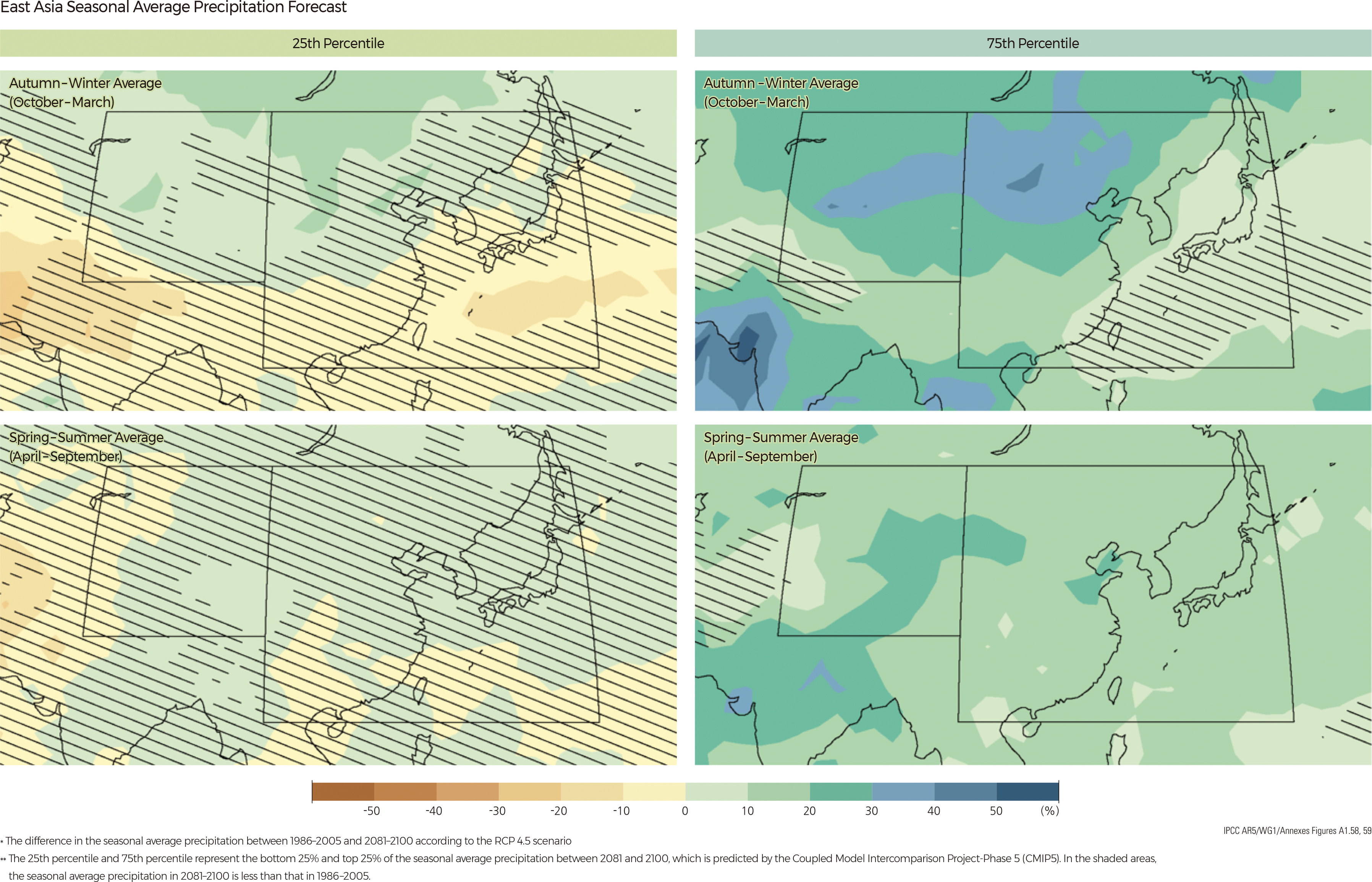English II 2020
The average annual temperature for 10 years (2010–2019) has risen by about 0.2–0.8°C compared to the long-term average annual temperature (1981–2010). It increased in all seasons except winter, and the temperature increase in spring and summer was larger than in other seasons. On the other hand, the winter temperature in the northern interior of East Asia was lower than the long-term average annual temperature. On the Korean Peninsula, the average annual temperature of the past 10 years has the largest increase in summer (0.6–1.1°C) compared to the long-term average annual temperature. The temperature change in winter has not been as large as in summer.
The change in the average annual precipitation for the last 10 years (2010–2019) appeared differently on land and in the ocean. Precipitation on land has decreased, but precipitation on the ocean has increased. The difference in the change in precipitation between land and ocean is evident during the summer months. The decrease of precipitation on land starts in winter and lasts through spring and summer, contributing to water shortages in East Asia in spring. The average annual precipitation on the Korean Peninsula for the last 10 years (2010–2019) has declined compared to the long-term average precipitation (1981–2010) due to the decrease in summer precipitation.
Compared to the average temperature for the period of 1986–2005, the RCP4.5 scenario predicts that the average temperature is likely to rise by more than 1.5°C in both winter and summer at the end of the 21st century (2081–2100). The scenario also predicts that the 75th percentile of the average temperatures in winter and summer projected by the climate models used in this scenario could be 3°C warmer. Changes in precipitation vary by region. The climate models used in the scenario predict that the 25th percentile of the annual precipitation will decrease in the subtropical regions in southern East Asia, while it will increase in the northern inland region. Compared to the average temperature for the period of 1986–2005, the 75th percentile of annual precipitation is likely to increase across East Asia. |

